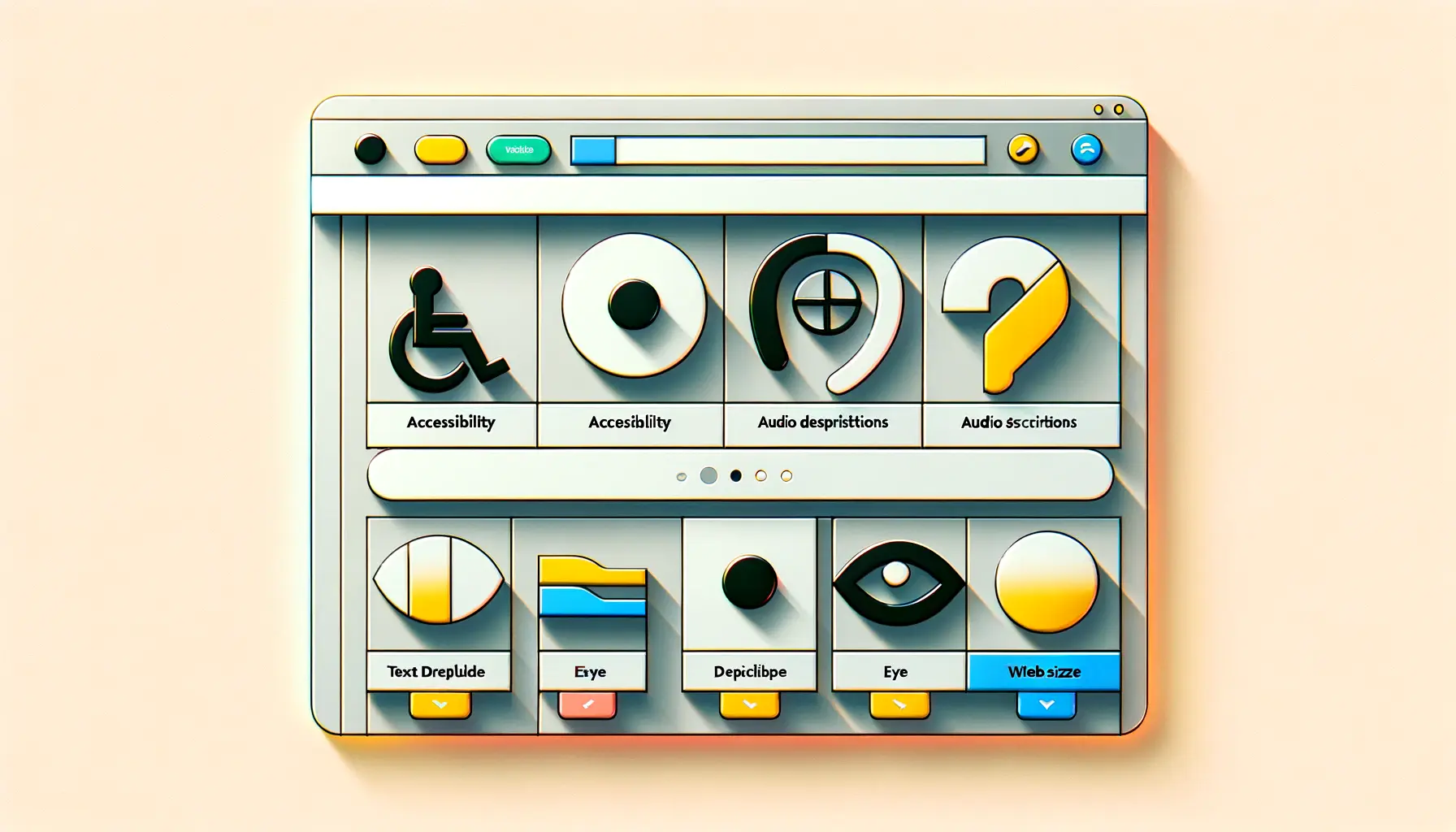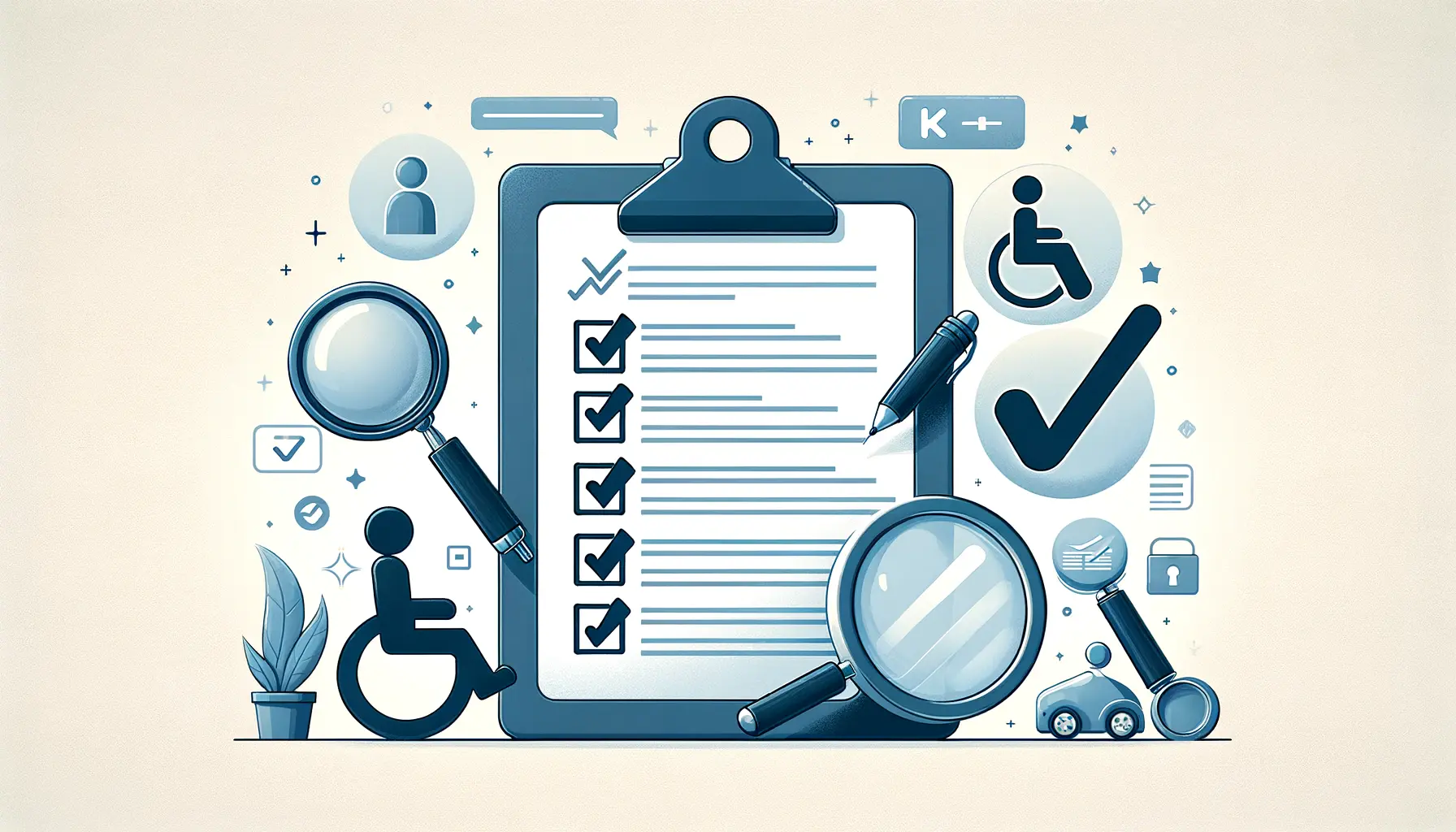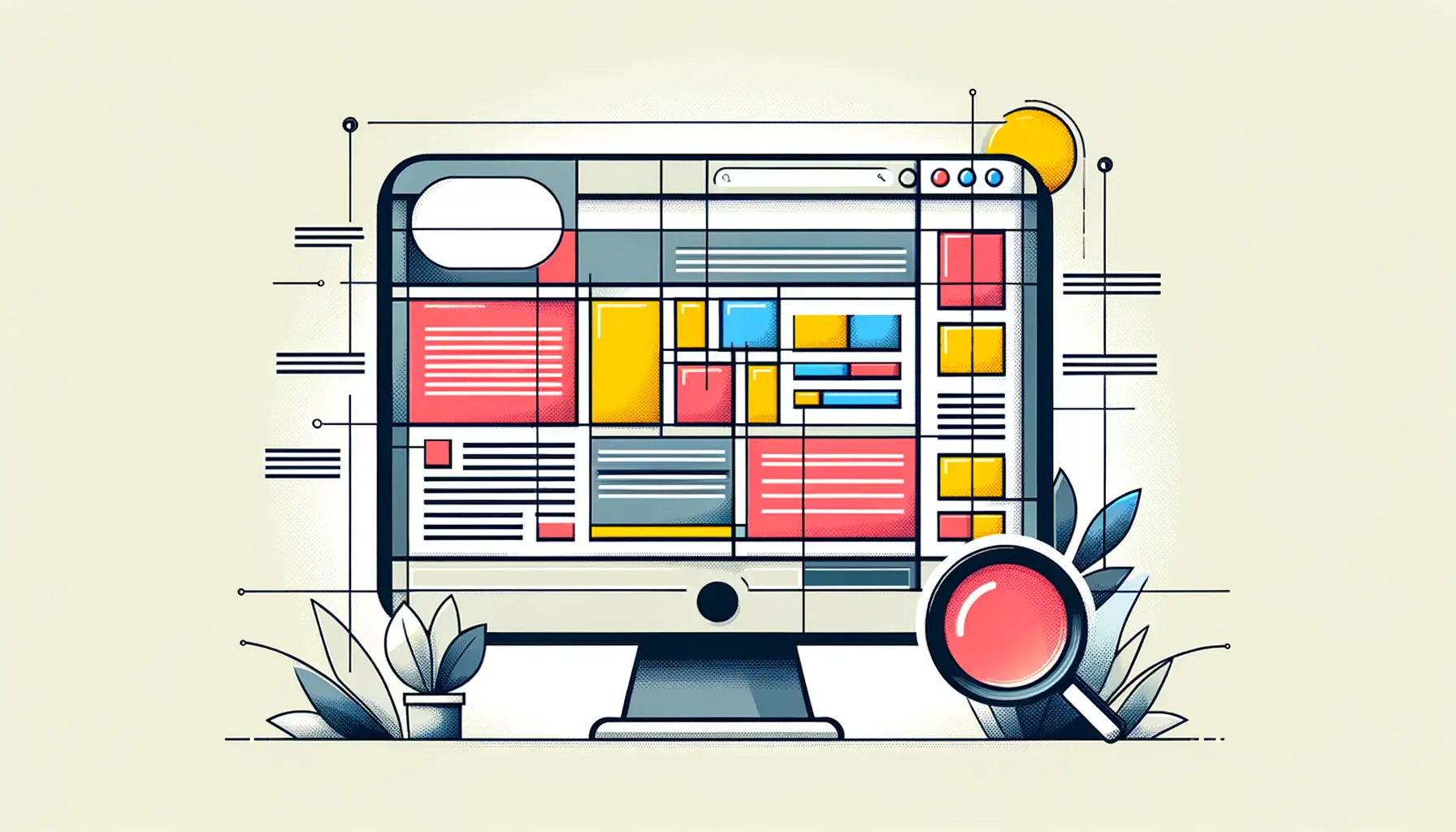At the intersection of digital inclusivity and search engine optimization lies a potent strategy that can elevate websites to new heights: accessible web design.
This approach not only champions the cause of making the internet usable for everyone, regardless of their physical or cognitive abilities but also aligns perfectly with the principles of SEO.
The core idea is simple yet profound—by designing websites that are accessible, we inherently boost their visibility and ranking on search engines.
This synergy between accessibility and SEO is not coincidental but rooted in shared goals: providing a seamless, user-friendly experience and ensuring content is easily discoverable and interpretable by both users and search engine algorithms.
The importance of integrating SEO with accessible web design cannot be overstated.
As search engines evolve, they increasingly prioritize user experience, with accessibility factors becoming critical in determining a website’s rank.
This evolution reflects a broader understanding that a truly effective SEO strategy goes beyond keywords and backlinks; it encompasses the overall accessibility of a website.
By focusing on accessible web design, businesses and content creators can tap into an often-overlooked aspect of SEO optimization, enhancing their site’s usability while simultaneously improving its search engine ranking.
- The Foundation of Accessible Web Design
- SEO Benefits of Accessible Web Design
- Creating Accessible Content for SEO
- Technical SEO and Accessible Web Design
- Accessible Web Design and Social Media Impact
- Maintaining and Updating Accessibility for SEO
- Future Trends in Accessible Web Design and SEO
- Conclusion: The Symbiosis of SEO and Accessible Web Design
- FAQs: Enhancing SEO Through Accessible Web Design
The Foundation of Accessible Web Design
Understanding Web Accessibility
Web accessibility refers to the inclusive practice of removing barriers that prevent interaction with, or access to websites, by people with disabilities.
When sites are correctly designed, developed, and edited, all users have equal access to information and functionality.
This includes ensuring that content is navigable and interpretable by screen readers, that color contrasts are sufficient for users with visual impairments, and that all interactive elements are operable through keyboard inputs for those who cannot use a mouse.
Implementing these practices does more than just open up websites to individuals with disabilities; it also aligns with the core principles of SEO.
Search engines like Google aim to provide the best possible results to their users, which means favoring websites that offer a great user experience.
Accessible websites tend to have well-structured content, clear navigation, and meaningful link text—all factors that search engines consider when ranking sites.
Key Elements of Accessible Design
Several key elements form the backbone of accessible web design.
First and foremost is semantic HTML, which uses HTML tags to convey the meaning and structure of web content.
This not only aids screen readers in interpreting the page layout but also helps search engines understand the hierarchy and relevance of information on a website.
Another crucial element is ARIA (Accessible Rich Internet Applications) labels, which provide additional context for interactive elements that may not be adequately described by HTML alone.
Moreover, accessible web design emphasizes the importance of responsive design, ensuring that websites are usable across a wide range of devices and screen sizes.
This adaptability not only improves accessibility for users with disabilities but also contributes to better SEO by catering to the mobile-first indexing approach of search engines.
Additionally, offering alternatives for multimedia content, such as captions for videos and alt text for images, enhances accessibility while providing search engines with more context for indexing and ranking purposes.
Incorporating accessible web design principles improves SEO by making sites more navigable, understandable, and usable for both search engines and users.
SEO Benefits of Accessible Web Design
The integration of accessible web design and SEO is a match made in digital marketing heaven.
By enhancing the accessibility of a website, you inadvertently boost its SEO performance.
This symbiotic relationship benefits not only users with disabilities but also search engines that prioritize content accessibility and user experience in their ranking algorithms.
Let’s delve into the specific SEO benefits that accessible web design brings to the table.
Improved Site Usability
Accessible web design inherently focuses on creating a user-friendly website.
This includes clear navigation, readable fonts, and interactive elements that are easy to engage with.
Such features not only make the site more accessible to people with disabilities but also enhance the overall user experience for all visitors.
Search engines like Google use metrics such as time on site and bounce rate as indicators of a site’s usability, which directly influences its search rankings.
By improving site usability, accessible web design helps in achieving better SEO outcomes.
Enhanced Content Structure
A well-structured website is a cornerstone of both accessible web design and SEO.
Utilizing proper heading tags (H1, H2, H3, etc.), descriptive link text, and organized content layouts makes information more digestible for users and search engines alike.
This structure aids search engine bots in crawling and indexing content more effectively, leading to improved visibility and rankings.
Moreover, a logically structured site enables users with assistive technologies to navigate and understand content with ease, thereby improving accessibility.
- Increased Page Load Speed: Accessible websites often prioritize simplicity and efficiency in their design, leading to faster loading times. Since page speed is a ranking factor for SEO, this can significantly impact a website’s search engine rankings.
- Mobile Responsiveness: With the increasing prevalence of mobile browsing, accessible web design’s emphasis on responsive design aligns perfectly with SEO’s mobile-first indexing. Websites that are accessible and mobile-friendly are more likely to rank higher in search engine results pages (SERPs).
- Alt Text for Images: Providing alternative text for images is a crucial aspect of web accessibility, allowing screen readers to describe images to visually impaired users. This practice also serves as an SEO best practice, as it gives search engines more context for indexing images, potentially leading to better rankings in image search results.
By focusing on accessible web design, you’re not just adhering to ethical standards and legal requirements; you’re also employing a powerful SEO strategy that enhances your site’s visibility and user engagement.
Creating Accessible Content for SEO
Content is the cornerstone of any effective SEO strategy, and its accessibility plays a pivotal role in ensuring that it reaches the widest possible audience.
Accessible content is not just about making it available to individuals with disabilities; it’s about creating content that is universally understandable, engaging, and valuable.
This approach not only aligns with ethical standards and legal requirements but also significantly boosts SEO by catering to the diverse needs of all users, including search engines.
Accessible content creation involves several key practices that enhance both its usability and SEO performance.
By focusing on clarity, structure, and inclusivity, content creators can ensure that their message is not only heard but also appreciated by a broader audience.
Let’s explore how to craft content that resonates with both users and search engines.
Clarity and Readability
Ensuring that your content is clear and easy to read is fundamental to accessibility.
This includes using simple language, short sentences, and paragraphs, as well as avoiding jargon unless it’s explained.
Tools like the Hemingway Editor can help assess the readability of your content.
Clear and readable content is not only more accessible to people with cognitive disabilities but also more likely to engage a wider audience, including those for whom English is a second language.
Structured Content with Semantic HTML
Using semantic HTML to structure your content is crucial for both accessibility and SEO.
Semantic HTML involves using specific tags (like
- Use of Headings: Headings (H1, H2, H3, etc.) organize content and make it easier to follow. Each page should have a clear hierarchy of headings, with a single H1 tag used for the main title, followed by H2s and H3s for subsections. This structure is beneficial for SEO as it helps search engines understand the main topics and subtopics of your content.
- Alt Text for Visuals: Including alternative text for images and videos not only makes your content accessible to users with visual impairments but also provides search engines with context for indexing multimedia content. This can enhance your visibility in search results, including image and video searches.
- Accessible Tables and Lists: When presenting data or lists, ensure that tables are used for tabular data only and are properly labeled, and that lists are correctly formatted with
<ul>,<ol>, and<li>tags. This helps both users and search engines understand and navigate your content more effectively.
Incorporating accessibility into your content strategy is not just about compliance; it’s a comprehensive approach to SEO that ensures your content is discoverable, engaging, and valuable to all users.
Technical SEO and Accessible Web Design
The technical aspects of SEO are crucial for ensuring that websites are not only accessible to users but also easily discoverable by search engines.
Accessible web design plays a significant role in enhancing a website’s technical SEO, addressing everything from site architecture to loading speeds and mobile responsiveness.
By adhering to web accessibility standards, websites can significantly improve their technical SEO, leading to better search rankings and a superior user experience.
Let’s explore the key technical SEO strategies that are influenced by accessible web design and how they contribute to a website’s overall SEO performance.
Site Architecture and Navigation
Accessible web design emphasizes a logical and clear site architecture, which is equally important for technical SEO.
A well-structured website allows users to navigate easily and find the information they need without confusion.
For search engines, a clear site architecture facilitates easier crawling and indexing of content.
Implementing an accessible navigation system, including skip links and consistent navigation menus, not only aids users with disabilities but also helps search engine bots understand and rank the site’s content more effectively.
Page Load Speed
One of the critical components of technical SEO is page load speed, as it directly impacts user experience and search engine rankings.
Accessible websites often prioritize performance and simplicity, which naturally leads to faster loading times.
Techniques such as optimizing images, minifying CSS and JavaScript, and leveraging browser caching can improve both accessibility and SEO.
Faster page speeds ensure that all users, including those using assistive technologies, can access content quickly and efficiently.
- Mobile Responsiveness: With the increasing importance of mobile-first indexing, having a mobile-responsive website is essential. Accessible web design ensures that websites are usable and navigable on all devices, which aligns with Google’s mobile-first approach to indexing and ranking websites.
- ARIA Landmarks: Using ARIA (Accessible Rich Internet Applications) landmarks helps define regions of a page (such as navigation, main content, or search forms) clearly. This not only aids users with screen readers in navigating the site more effectively but also helps search engines understand the structure and content of a website, potentially improving its SEO.
- Schema Markup: Implementing schema markup is another technical SEO strategy that enhances web accessibility. By providing search engines with explicit clues about the meaning of a page’s content, schema markup can improve the way your content is represented in SERPs, making it more accessible to users searching for specific information.
Accessible web design and technical SEO are deeply interconnected. By focusing on accessibility, you inherently optimize your website’s technical SEO, enhancing both user experience and search engine visibility.
Accessible Web Design and Social Media Impact
The influence of social media on SEO is a topic of ongoing debate among digital marketers.
While social signals—likes, shares, comments—do not directly influence search engine rankings, the indirect benefits of social media on SEO are undeniable.
Accessible web design extends its benefits to social media platforms, enhancing a brand’s reach, engagement, and ultimately, its website traffic.
By ensuring that content shared on social media is accessible, businesses can tap into a wider audience, including individuals with disabilities, thereby amplifying their SEO efforts indirectly.
Let’s delve into how accessible web design impacts social media engagement and, by extension, SEO.
Enhancing Social Media Engagement
Accessible content on social media platforms means that all users, regardless of their abilities, can engage with your content.
This includes using descriptive alt texts for images, providing captions for videos, and ensuring that your social media posts are clear and concise.
Improved engagement on social media not only increases your content’s reach but also drives more traffic to your website.
This increased traffic signals to search engines that your content is valuable and relevant, potentially boosting your SEO rankings.
Expanding Your Audience Reach
By making your social media content accessible, you open up your brand to a broader audience, including the millions of people worldwide who have disabilities.
This inclusivity can significantly enhance your brand’s reputation and lead to higher levels of engagement and sharing on social media platforms.
The more your content is shared, the greater the likelihood that it will generate backlinks to your website, a critical factor in SEO.
Backlinks from reputable sites signal to search engines that your content is authoritative and trustworthy, further improving your SEO performance.
- Use of Hashtags: Accessible web design principles can also apply to the use of hashtags on social media. By capitalizing the first letter of each word in a hashtag (a practice known as Camel Case), you make them more readable for everyone, including those using screen readers. This small but impactful practice can enhance the visibility of your social media posts and contribute to broader engagement.
- Accessible Graphics and Memes: Graphics and memes are popular on social media but often lack accessibility features. By including text descriptions and ensuring that any text within images is also provided in the post’s text, you make your social media content more accessible. This practice not only supports your SEO strategy by making content more shareable but also aligns with inclusive marketing practices.
Integrating accessible web design principles into your social media strategy not only fosters inclusivity but also amplifies your SEO efforts through increased engagement and audience reach.
Maintaining and Updating Accessibility for SEO
Accessible web design is not a one-time task but an ongoing commitment to inclusivity and user experience.
As technologies and standards evolve, so too must our efforts to maintain and update website accessibility.
This continuous improvement is crucial not only for ensuring that all users can access and benefit from web content but also for sustaining and enhancing a website’s SEO performance.
Regularly updating and monitoring accessibility features can lead to better engagement, lower bounce rates, and higher rankings in search engine results pages (SERPs).
Let’s examine the strategies for maintaining and updating website accessibility to support SEO efforts.
Regular Accessibility Audits
Conducting regular accessibility audits is essential for identifying and addressing any accessibility barriers that may arise as content is updated or as new features are added to a website.
Tools like the Web Accessibility Evaluation Tool (WAVE) or Google’s Lighthouse can help in assessing a website’s accessibility and providing actionable recommendations.
These audits not only ensure compliance with accessibility standards but also highlight opportunities for improving the site’s SEO by enhancing user experience and site navigability.
Staying Updated with Accessibility Standards
The world of web accessibility is ever-evolving, with new standards and guidelines being developed as technology advances.
Staying informed about these changes is crucial for maintaining an accessible website.
For instance, the Web Content Accessibility Guidelines (WCAG) are periodically updated to reflect new best practices in web accessibility.
By keeping abreast of these updates and implementing the recommended changes, website owners can ensure that their site remains accessible to all users, thereby supporting their SEO strategy.
- User Feedback: Incorporating feedback from users, especially those with disabilities, can provide invaluable insights into how a website’s accessibility can be improved. This feedback can highlight issues that automated tools might not catch and offer perspectives on how the user experience can be enhanced for everyone.
- Training and Awareness: Ensuring that your team is trained in accessibility best practices is vital for maintaining an accessible website. Regular training sessions can help content creators, developers, and designers stay informed about accessibility and SEO best practices, leading to a more inclusive and search-engine-friendly website.
- Accessibility as Part of the Development Process: Integrating accessibility considerations into the website development process from the start can prevent many common accessibility issues. This proactive approach not only makes maintaining accessibility easier but also supports SEO by ensuring that the website is designed with both user experience and search engine visibility in mind.
Ongoing attention to accessibility is not just about compliance; it’s a strategic approach to SEO that ensures your website remains competitive and accessible to all users.
Future Trends in Accessible Web Design and SEO
The landscape of web design and SEO is constantly evolving, with new trends and technologies shaping the way we create and consume digital content.
Accessible web design, once considered a niche aspect of website development, is now at the forefront of creating inclusive and user-friendly online experiences.
As we look to the future, several trends in accessible web design are emerging that will not only enhance the usability of the web for individuals with disabilities but also influence SEO strategies.
Understanding these trends is crucial for web designers, developers, and SEO specialists who aim to create websites that are not only compliant with accessibility standards but also optimized for search engines.
Let’s explore the future directions of accessible web design and their implications for SEO.
Artificial Intelligence and Automation
The integration of artificial intelligence (AI) and automation in web design and SEO offers promising advancements in improving web accessibility.
AI can be used to automatically generate alt text for images, provide real-time captioning for videos, and even predict and fix accessibility issues before they affect users.
These advancements can significantly reduce the time and resources required to maintain an accessible website, while also improving its SEO by ensuring content is fully accessible and indexable by search engines.
Increased Focus on Voice Search
As voice search becomes more prevalent, optimizing for voice queries is becoming an essential part of SEO.
Accessible web design plays a crucial role in this trend, as websites must be structured in a way that allows voice assistants to easily access and interpret content.
This means adopting a more conversational tone in content, structuring information with clear headings, and ensuring that all content is navigable via voice commands.
These practices not only make websites more accessible to users with visual impairments but also optimize them for voice search, a growing source of web traffic.
- Advanced Accessibility Standards: As technology evolves, so too do the standards governing web accessibility. Future updates to the Web Content Accessibility Guidelines (WCAG) and other standards will likely introduce new requirements for emerging technologies, such as virtual reality (VR) and augmented reality (AR). Staying ahead of these changes and incorporating new accessibility features into web design will be key for SEO, as search engines continue to prioritize sites that offer an inclusive user experience.
- Universal Design Principles: The concept of universal design, which aims to create products and environments that are usable by all people to the greatest extent possible, is gaining traction in web design. This approach not only benefits users with disabilities but also creates a more seamless and engaging experience for all users. As universal design principles become more integrated into web development, we can expect to see a positive impact on SEO, as these sites are more likely to be rewarded by search engines for their usability and content accessibility.
Embracing the future trends in accessible web design is not just about ensuring compliance with standards; it’s about leading the way in creating a more inclusive and user-friendly internet that benefits all users and enhances SEO performance.
Conclusion: The Symbiosis of SEO and Accessible Web Design
In the digital age, the fusion of SEO and accessible web design has emerged as a pivotal strategy for enhancing online visibility and user engagement.
This article has traversed the multifaceted relationship between accessible web design and SEO, underscoring the undeniable benefits that inclusivity brings to search engine rankings and overall user experience.
As we’ve explored, accessible web design is not merely a compliance requirement but a robust SEO strategy that caters to a broader audience, including individuals with disabilities.
The Path Forward
The future of web design and SEO is intrinsically linked to the principles of accessibility.
With emerging trends like AI, voice search, and universal design principles, the potential for creating more inclusive and user-friendly websites is boundless.
These advancements promise not only to enhance the web experience for users with disabilities but also to refine SEO strategies, ensuring that websites are primed for both search engine algorithms and the diverse needs of their users.
Key Takeaways
- Accessible web design and SEO share common goals: improving user experience and making content easily discoverable.
- Implementing accessible web design practices, such as semantic HTML and ARIA landmarks, directly benefits SEO by enhancing site structure and usability.
- Emerging technologies and trends in web design are set to further integrate accessibility into SEO, highlighting the importance of staying ahead in both areas.
In conclusion, the synergy between accessible web design and SEO is undeniable.
By embracing accessibility, web designers and SEO specialists can not only create more inclusive digital environments but also achieve superior search engine rankings.
The journey towards a more accessible web is ongoing, and as technology evolves, so too will the strategies that underpin SEO and web design.
The commitment to accessible web design is a commitment to a better, more inclusive internet—a goal that benefits all users and enhances the effectiveness of SEO strategies.
Quality web design is key for a great website! Check out our service page to partner with an expert web design agency.
FAQs: Enhancing SEO Through Accessible Web Design
Explore common questions about integrating SEO strategies with accessible web design to improve your website’s performance and user experience.
Accessible web design improves SEO by enhancing site usability, structure, and content clarity, making it easier for search engines to crawl and index.
Yes, by making your website more accessible, you can reach a wider audience, including users with disabilities, thereby increasing web traffic.
Key elements include semantic HTML, alt text for images, proper use of headings, and ensuring all content is keyboard navigable.
Yes, mobile accessibility is crucial for SEO as search engines prioritize mobile-friendly websites in their ranking algorithms.
ARIA labels help search engines understand the function and context of web elements, improving content accessibility and SEO.
Improving site speed enhances both accessibility for users with slow connections and SEO by reducing bounce rates and improving user experience.
Optimizing for voice search improves accessibility for users who rely on voice commands, thereby supporting SEO by catering to a broader audience.
Yes, semantic HTML enhances accessibility and SEO by providing clear content structure, making it easier for search engines to understand and rank pages.













